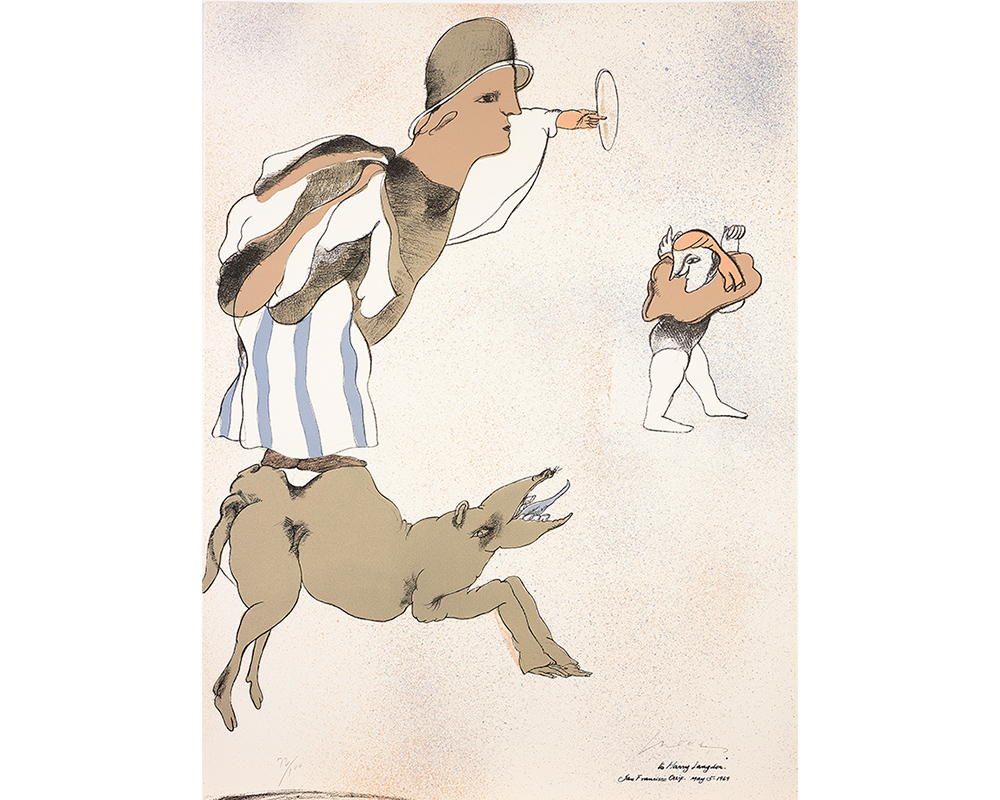
Homage to Quevedo
Maggie Kurkoski is a member of the Smith College class of 2012 and the Brown Post-Baccalaureate Curatorial Fellow in the Cunningham Center.
José Luis Cuevas was born in Mexico City around 1933 above a paper factory that his grandfather managed. In his words, “perhaps because I was born in a paper mill and pencil factory, paper has always had a great fascination for me." Cuevas is considered a self-taught artist; while he did take some lessons at Escuela Nacional de Pintura y Escultura "La Esmeralda," Mexico City's famous art school, he left, either because he disagreed with the school's teaching methods, or perhaps due to a life-threatening bout with rheumatic fever that forced him to stay at home and recover.
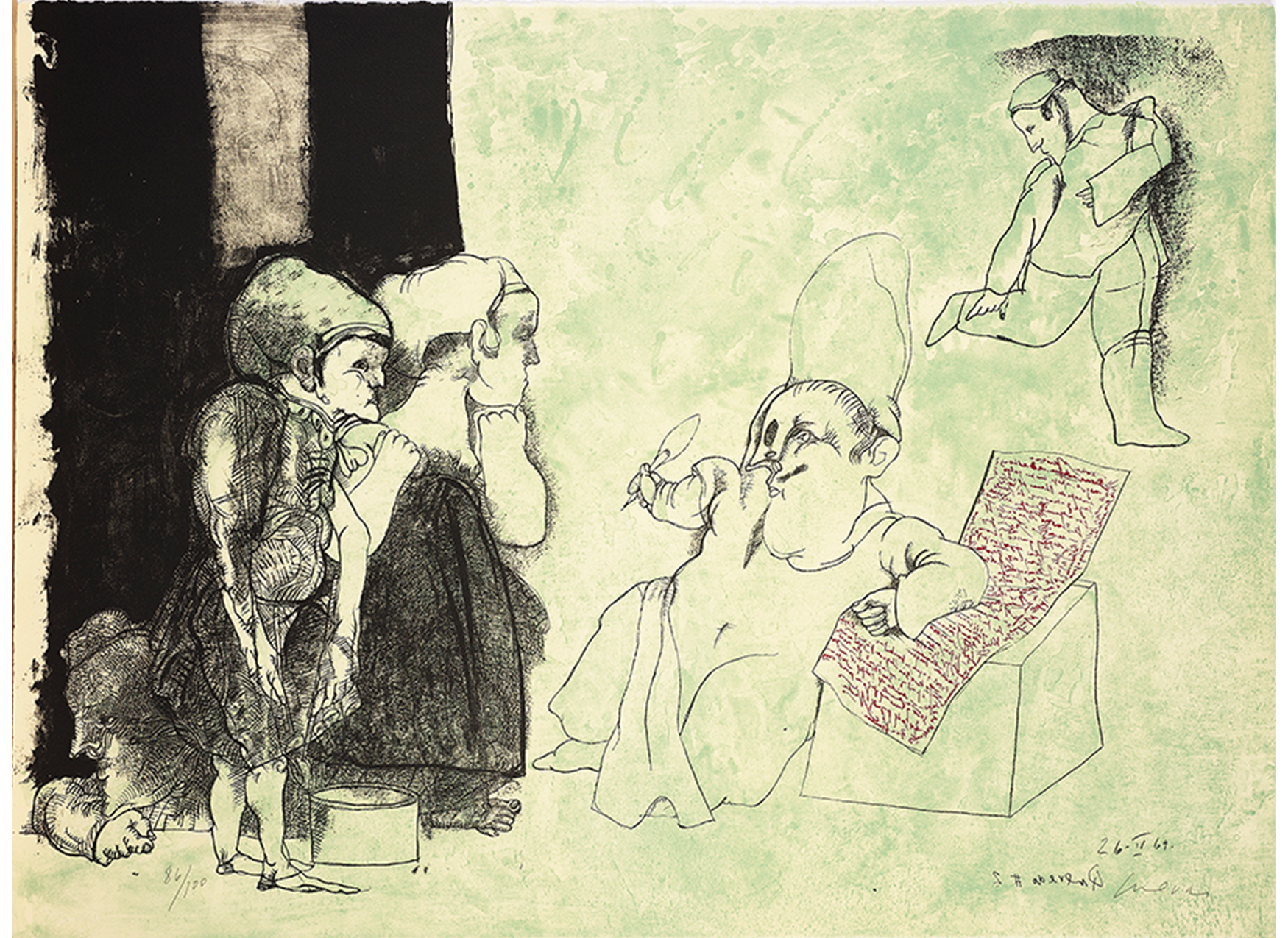
José Luis Cuevas. Mexican, 1934–2017. Lo Feo de Este Mundo I, from the Homage to Quevedo Suite, 1969. Lithograph printed in color on Arches wove paper. Gift of Donna Kargman Donaghy, class of 1959, and Walter E. Donaghy. Photography by Petegorsky/Gipe. SC 1982.24.3.
His older brother, in training to become a psychiatrist, worked at a public mental institution and as a teenager Cuevas would follow him to work and sketch the patients. He began to produce works that depicted the shunned sectors of society -- the mentally ill, the impoverished, the prostitutes -- those 'undesirables' he once saw from his childhood apartment window.
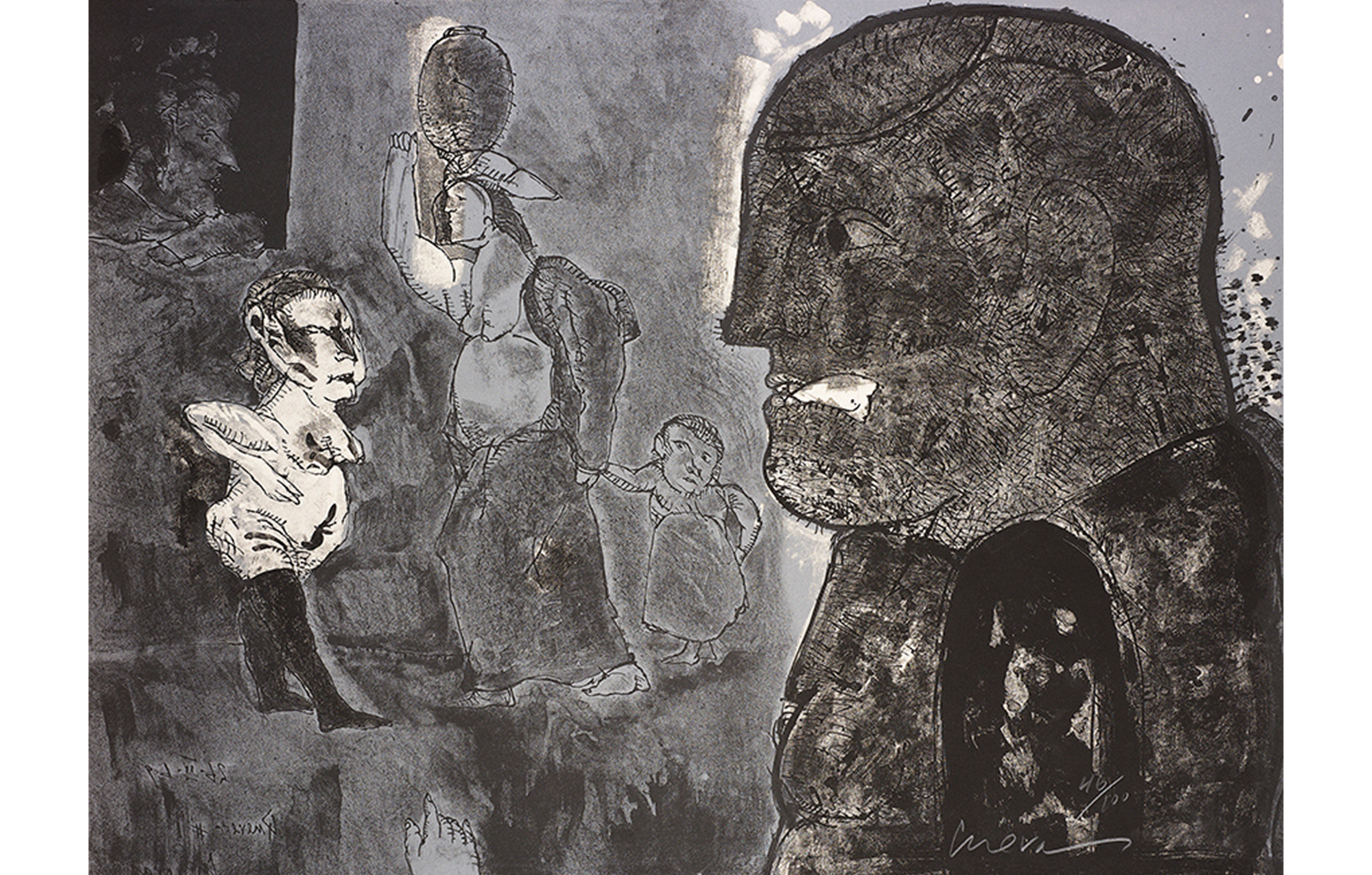
José Luis Cuevas. Mexican, 1934–2017. Lo Feo de Este Mundo II, from the Homage to Quevedo Suite, 1969. Lithograph printed in color on Arches wove paper. Gift of Donna Kargman Donaghy, class of 1959, and Walter E. Donaghy. Photography by Petegorsky/Gipe. SC 1982.24.4.
As early as 1953, Cuevas’ art had caught the eye of José Gómez Sicre, the Cuban-born director of the Visual Arts Section of the Pan American Union (PAU). The PAU sought to strengthen the ties between the countries of the Americas, and also to prevent the spread of communism in the region. Gómez Sicre was on the lookout for up-and-coming young Mexican artists, particularly those who presented an alternative to Muralism, the entrenched Mexican style at the time.
Muralism emerged after the 1910 Revolution, when José Vasconcelos, the Education Minister, commissioned artists to create wall murals that would promote the social and political messages of the Revolution for a mostly illiterate population. Diego Rivera was one Mexican artist who embraced this movement, and produced murals such as Market Scene below.
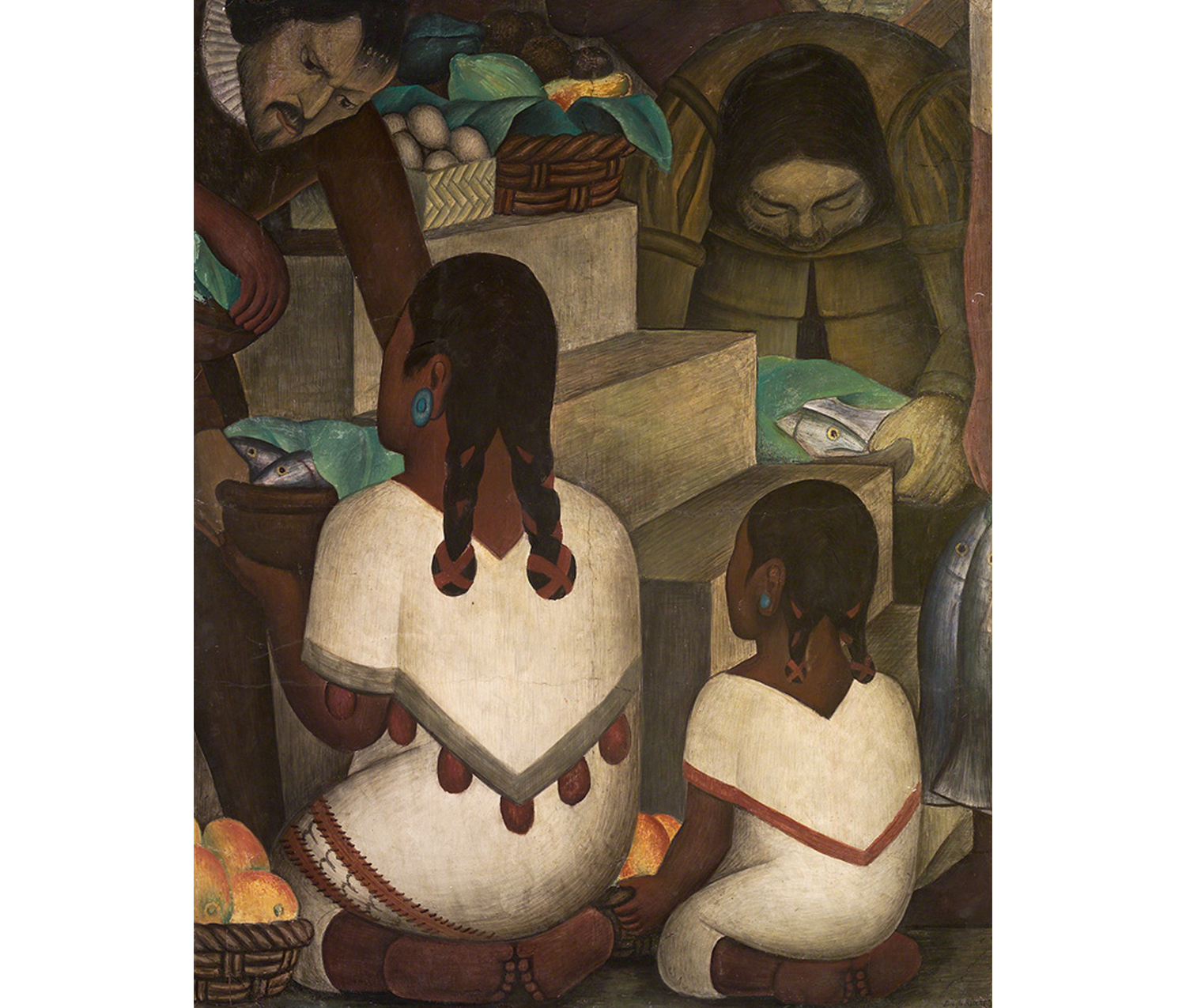
Diego Rivera. Mexican, 1886–1957. Market Scene, 1930. Water based paint on plaster fresco mounted on cement. Gift of Mrs. Dwight W. Morrow (Elizabeth Cutter, class of 1896). Photography by Petegorsky/Gipe. SC 1938.13.1.
Throughout the early 20th century, Muralism had dominated Mexican art. Many young artists became disenchanted, even stifled, by its straightforward vision of their nation. Cuevas’ complex, uncomfortable images were a strong departure from Muralism, and Gómez Sicre decided to take the young artist under his wing.
By July 1954, Gómez Sicre had brought Cuevas to Washington D.C. and organized a show of his works (Cuevas was only twenty-one at the time). All pieces were priced between $15-$40. The show sold out completely and launched Cuevas into the international arts scene. With Gómez Sicre’s help, he grew into a leading figure among the Ruptura (Rupture) artists -- a group of young Mexican artists who broke away from the Muralism tradition and its politics.
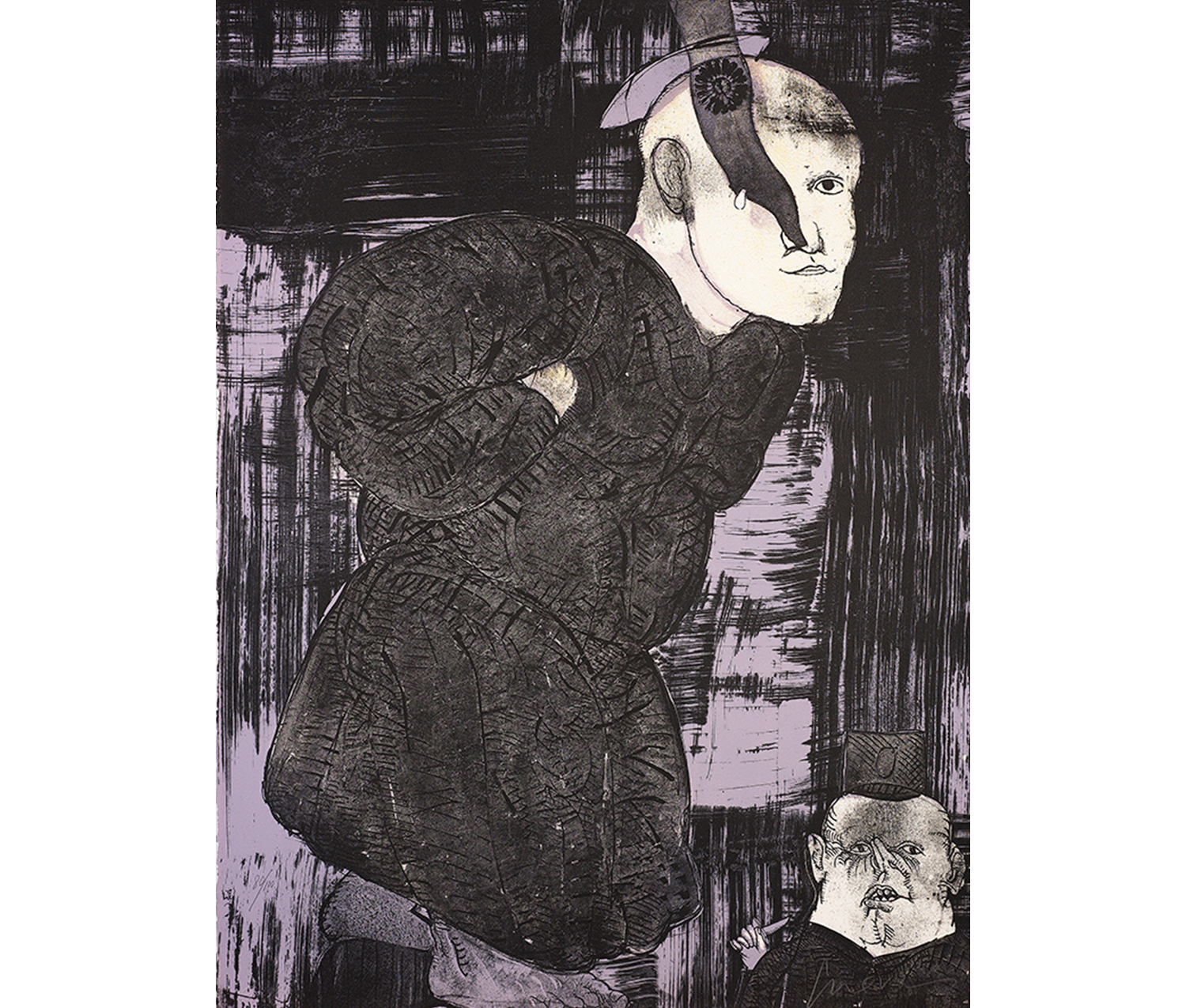
José Luis Cuevas. Mexican, 1934–2017. El Santo de la Guerra, from the Homage to Quevedo Suite, 1969. Lithograph printed in color on Arches wove paper. Gift of Donna Kargman Donaghy, class of 1959, and Walter E. Donaghy. Photography by Petegorsky/Gipe. SC 1982.24.2.
Cuevas had long had an interest in European literature, and Gómez Sicre encouraged his young protégée to embrace these great works in his art. As Cuevas illustrated the works of Kafka and other European writers, he perhaps hoped to show that the Ruptura group and other Latin American artists could hold their own with these established masters.
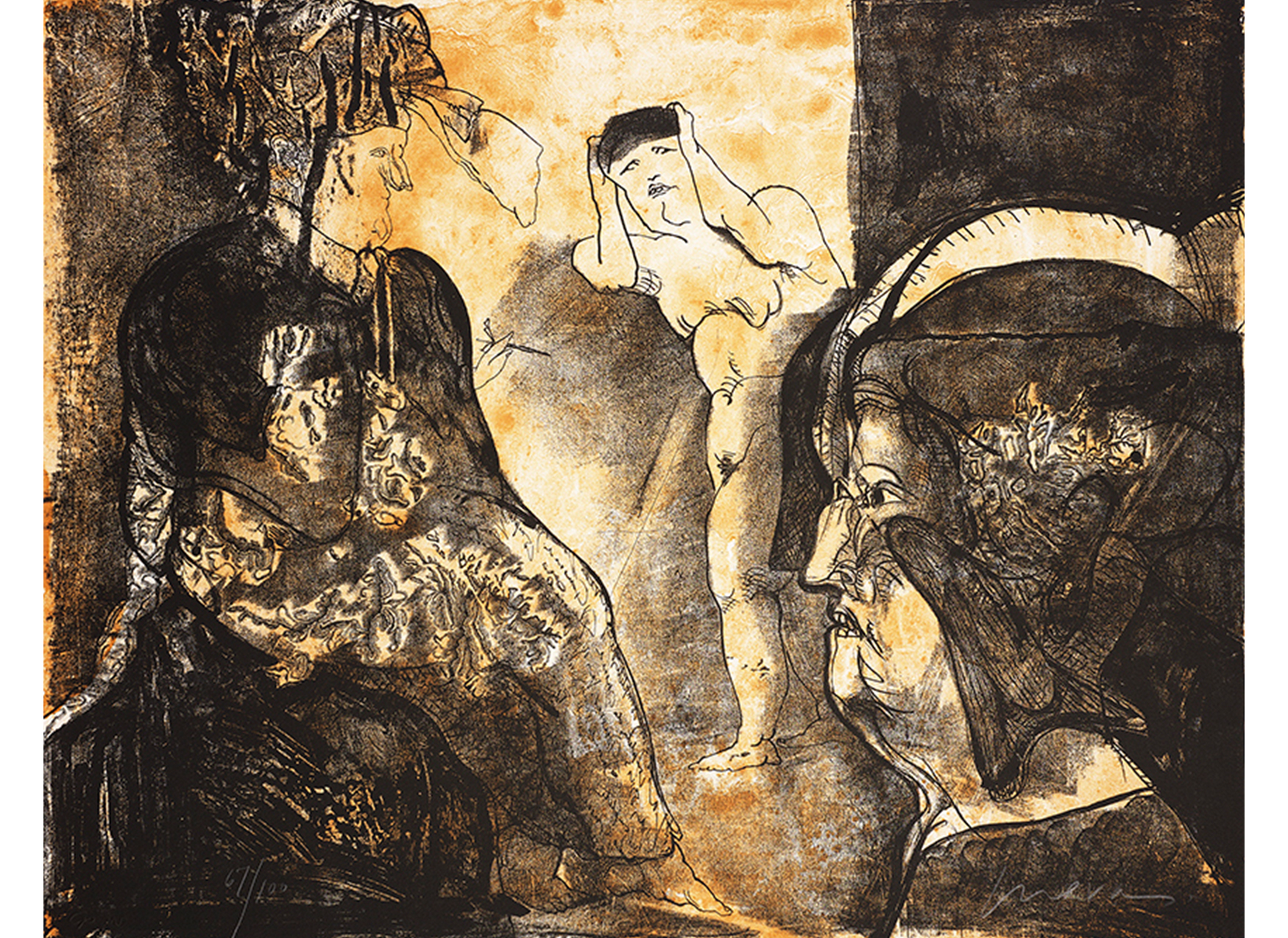
José Luis Cuevas. Mexican, 1934–2017. Lo Feo de Este Mundo III, from the Homage to Quevedo Suite, 1969. Lithograph printed in color on Arches wove paper. Gift of Donna Kargman Donaghy, class of 1959, and Walter E. Donaghy. Photography by Petegorsky/Gipe. SC 1982.24.5.
The Cunningham Center holds one of Cuevas’ literary portfolios, Homage to Quevedo. This suite of prints was inspired by the poetry of Francisco Gómez de Quevedo, a Spanish writer who worked in the seventeenth century. The resulting works are cryptic, complex and utterly engrossing.
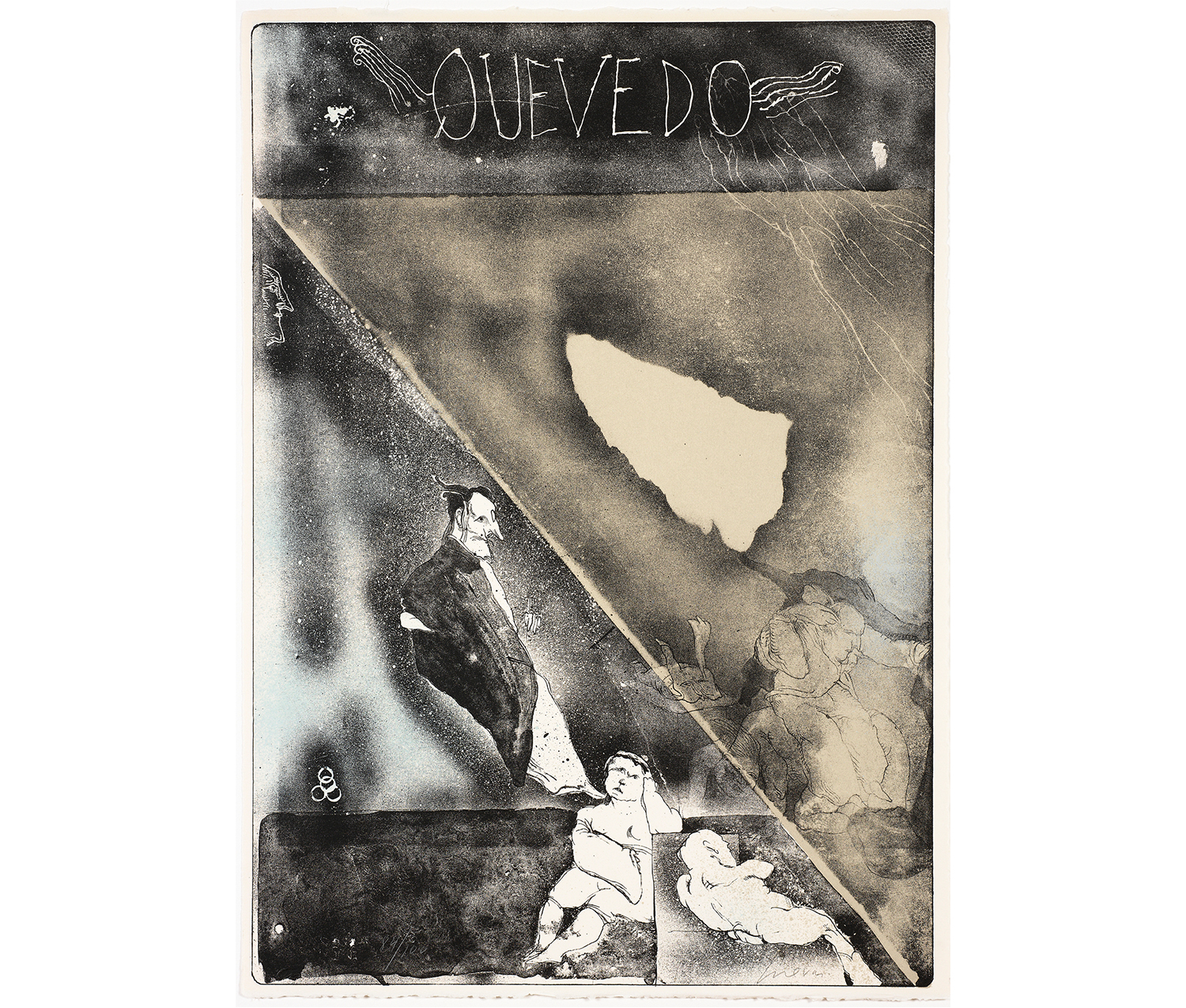
José Luis Cuevas. Mexican, 1934–2017. Condicion Humana II, from the Homage to Quevedo Suite, 1969. Lithograph printed in color on Arches wove paper. Gift of Donna Kargman Donaghy, class of 1959, and Walter E. Donaghy. Photography by Petegorsky/Gipe. SC 1982.24.7.
Unlike his earliest portraits, these later works flesh out entire scenes, with figures interacting with each other within dimly-lit settings. They appear as self-sustained narratives in their own right, although what exactly is happening remains enigmatic.
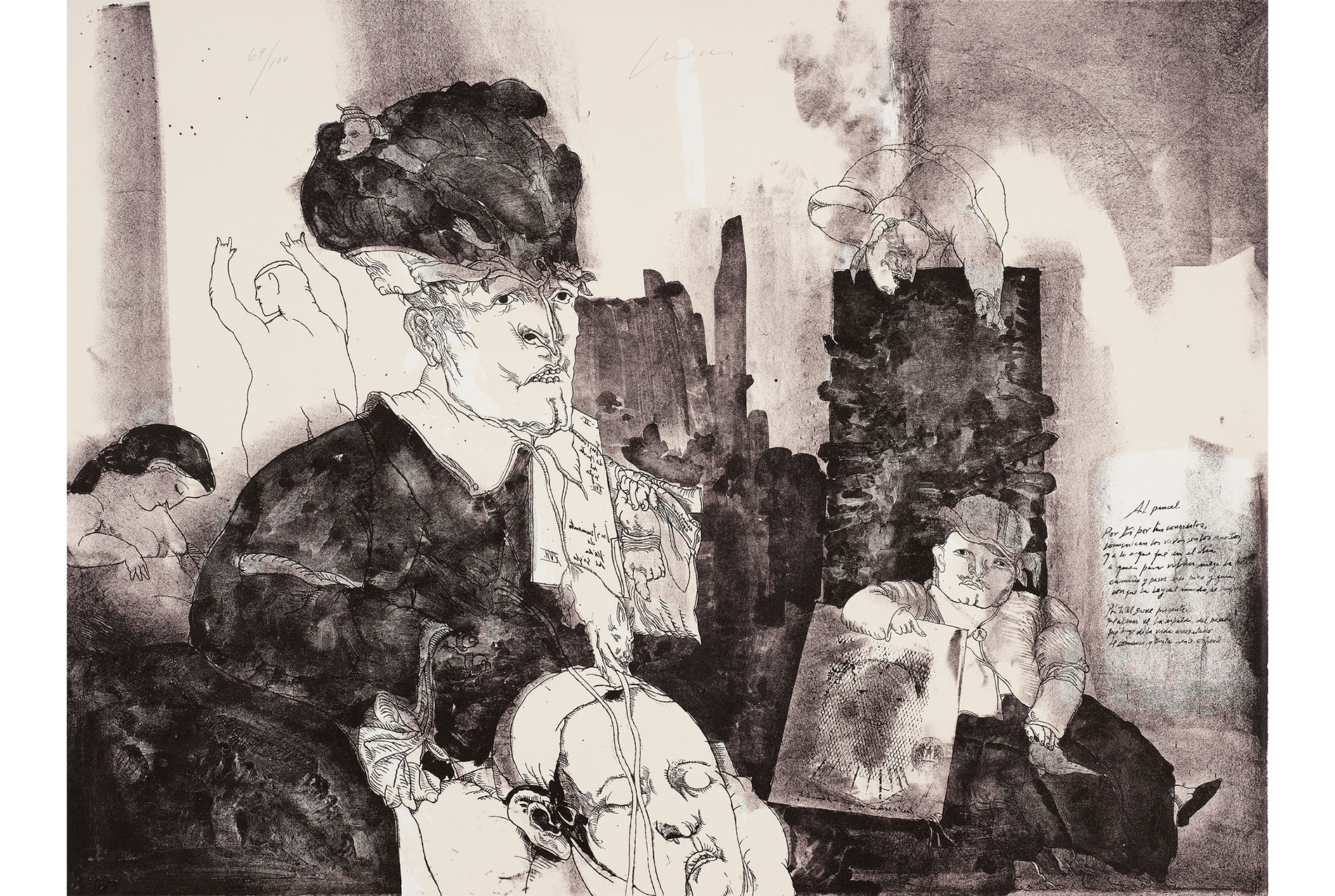
José Luis Cuevas. Mexican, 1934–2017. La Vida, from the Homage to Quevedo Suite, 1969. Lithograph printed in color on Arches wove paper. Gift of Donna Kargman Donaghy, class of 1959, and Walter E. Donaghy. Photography by Petegorsky/Gipe. SC 1982.24.8.